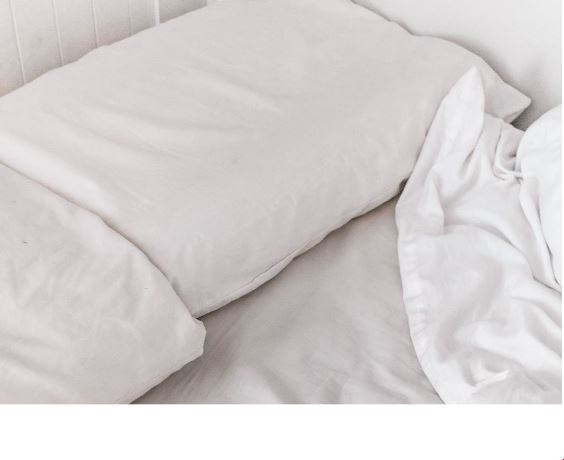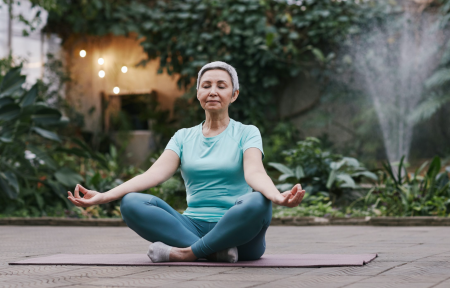Bed bugs can be one of the most frustrating and unsettling pests to deal with in your home. Not only can they cause itchy bites, but they can also pose a threat to your family’s health and comfort.
These tiny insects are notoriously difficult to get rid of once they infest your space, which is why it is essential to take proactive measures to protect yourself and your loved ones.
Identifying Bed Bugs: Signs, Symptoms, and Behavior
Bed bugs are small, reddish-brown insects that feed on human blood. They are often found in the cracks and crevices of beds, furniture, and walls.
Although they do not transmit diseases, their bites can cause skin irritation and allergic reactions in some people.
Identifying bed bugs is the first step in preventing and treating an infestation.
Signs of Bed Bugs
The following signs may indicate a bed bug infestation:
- Bites – Bed bug bites are usually grouped together in a line or cluster and can be itchy and red.
- Bloodstains – After feeding, bed bugs leave behind small bloodstains on sheets and mattresses.
- Fecal Stains – Bed bugs also leave behind black or brown fecal stains on sheets, mattresses, and walls.
- Eggshells and Shed Skins – Bed bugs shed their skins as they grow, leaving behind empty shells and skins.
- Live Bugs – Bed bugs are small and difficult to see, but if you look closely, you may be able to spot them in the seams and crevices of your mattress or furniture.
Symptoms of Bed Bug Bites
Bed bug bites can cause a range of symptoms, including:
- Itching and Redness – Bed bug bites are usually itchy and may become red and swollen over time.
- Allergic Reactions – Some people may have an allergic reaction to bed bug bites, which can cause severe itching, swelling, and even anaphylaxis in rare cases.
- Secondary Infections – Scratching bed bug bites can lead to secondary infections, especially if the skin is broken.
Behavior of Bed Bugs
Bed bugs are nocturnal insects that feed on human blood while we sleep. They are attracted to the carbon dioxide we exhale and the warmth of our bodies.
Bed bugs prefer to hide during the day, so they are often found in the seams and crevices of mattresses, furniture, and walls. They can also hide in luggage, clothing, and other personal belongings, making it easy for them to travel from one location to another.
Identifying bed bugs is crucial to prevent and treat an infestation. Look out for signs such as bites, bloodstains, fecal stains, eggshells, shed skins, and live bugs. If you suspect a bed bug infestation, take immediate action to prevent it from spreading further.
Prevention is Key: Simple Ways to Protect Your Home from Infestations
Preventing bed bugs from entering your home is key to avoiding the stress, financial burden, and health impacts of an infestation.
While bed bugs can be difficult to eliminate, they can be stopped from getting into your home in the first place. In this section, we will explore some simple ways to protect your home from bed bugs.
Inspect Used Furniture Before Bringing it Inside
Used furniture is a common way bed bugs enter homes. Always inspect used furniture before bringing it into your home.
Check the seams, folds, and crevices of the furniture for signs of bed bugs. If you’re buying second-hand furniture online, ask the seller about any history of bed bugs or have the item professionally inspected before purchase.
Use Mattress Encasements
Mattress encasements can help prevent bed bugs from getting into your mattress and box spring. Encasements cover the entire mattress and box spring, making it difficult for bed bugs to find hiding places.
Be sure to purchase mattress encasements that are specifically designed for bed bug prevention.
Keep a Clean Home
Keeping a clean and clutter-free home can help prevent bed bugs from finding places to hide. Regularly vacuum carpets and upholstery, wash bedding, and keep your living spaces tidy.
Also, be sure to seal any cracks or crevices in walls, baseboards, and window frames to prevent bed bugs from entering.
Be Cautious When Traveling
Bed bugs can hitchhike on luggage, clothing, and personal belongings. When traveling, inspect hotel rooms carefully for signs of bed bugs, keep luggage off the floor, and store clothes and other items in sealed plastic bags.
Be Proactive
Finally, be proactive when it comes to preventing bed bugs. Regularly inspect your home for signs of bed bugs, even if you haven’t had an infestation in the past. If you suspect a bed bug infestation, don’t wait to take action. The earlier you catch an infestation, the easier it will be to eliminate it.
Preventing bed bugs from entering your home is key to avoiding the stress and financial burden of an infestation. By following these simple tips, you can protect your home and your family’s health and comfort from these pesky pests.
Battling Bed Bugs: Effective Treatment Options for Your Home and Belongings
Bed bugs are notoriously difficult to eliminate once they have infested your home. However, there are several effective treatment options available that can help you battle bed bugs. In this section, we will explore some of the most effective treatment options for your home and belongings.
Heat Treatment
Heat treatment is one of the most effective ways to eliminate bed bugs from your home. This method involves raising the temperature of the infested area to a level that kills bed bugs and their eggs. Professional pest control companies use specialized equipment to heat treat your home, but you can also purchase portable heat treatment units for personal use.
Chemical Treatment
Chemical treatment involves the use of pesticides to eliminate bed bugs. This method can be effective, but it is important to follow all safety instructions when using pesticides in your home. Always consult with a professional pest control company or an exterminator before using any chemicals to treat bed bugs.
Vacuuming and Steam Cleaning
Vacuuming and steam cleaning your home and personal belongings can also help eliminate bed bugs. Use a high-powered vacuum cleaner to suck up bed bugs, eggs, and debris from your mattress, furniture, and carpets. Then, use a steam cleaner to kill any remaining bed bugs and their eggs. Be sure to dispose of vacuum bags outside of your home to prevent bed bugs from re-infesting your living space.
Freezing
Freezing personal belongings, such as clothing and bedding, can also help eliminate bed bugs. Place infested items in sealed plastic bags and freeze them for at least 72 hours. This will kill bed bugs and their eggs.
Encasing Mattresses and Box Springs
As mentioned earlier, encasing mattresses and box springs can help prevent bed bugs from infesting them. If you are dealing with an active bed bug infestation, encasing your mattresses and box springs can also help contain the bed bugs and make it easier to eliminate them.
Battling bed bugs can be challenging, but there are several effective treatment options available.
Heat treatment, chemical treatment, vacuuming and steam cleaning, freezing, and encasing mattresses and box springs are some of the most effective ways to eliminate bed bugs from your home and belongings.
Always consult with a professional pest control company or an exterminator before attempting any treatment options on your own.
Final Considerations
Bed bugs can be a persistent and unpleasant problem for homeowners. However, by taking proactive measures to prevent and treat infestations, you can protect your family’s health and comfort from these pesky pests.
By staying vigilant and proactive, you can keep bed bugs at bay and enjoy a comfortable and pest-free home.
If you do suspect a bed bug infestation, it is important to consult with a professional pest control company or an exterminator to ensure that the problem is addressed effectively and safely.














